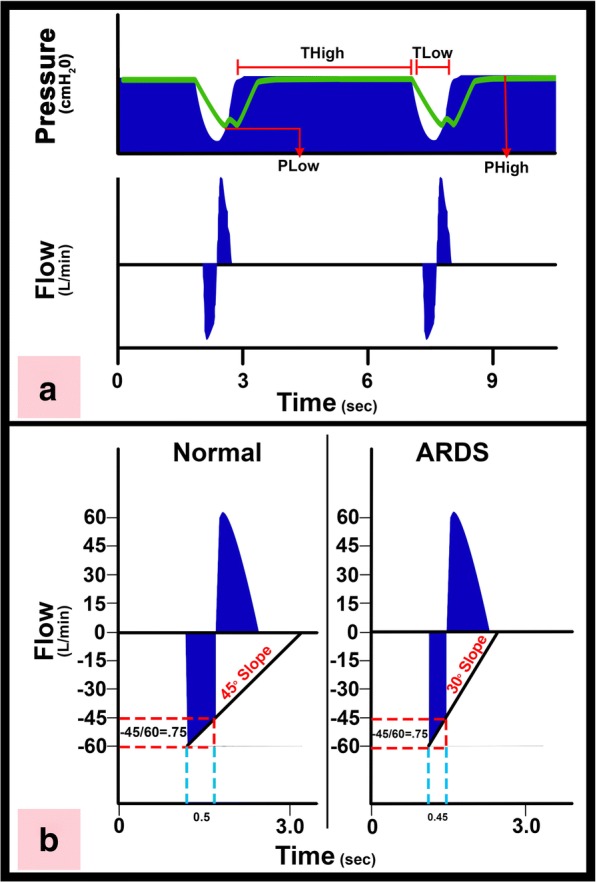Fig. 6.

a Typical pressure and flow curves using the time-controlled adaptive ventilation (TCAV) protocol. There is an extended time at inspiration (THigh) and minimal time at expiration (TLow). The high pressure (PHigh) combined with the THigh determines the magnitude and duration of the continuous positive airway pressure (CPAP). The end-expiratory airway pressure (TLow) is always set to 0 cmH2O, which minimizes the resistance to expiratory flow allowing a more accurate assessment of lung respiratory system elastance determined by the expiratory flow curve. However, PLow never reaches 0 cmH2O because TLow is set sufficiently short to maintain both lung volume and pressure at end expiration. The green line is the measured tracheal pressure, which is the actual end-expiratory pressure seen by the alveolus. We have found that if expiratory duration is set properly that the end-expiratory pressure (the actual PLow) is approximately ½ of the PHigh. b Using the slope of the expiratory flow curve (SEFC) to set the expiratory duration necessary to stabilize the lung. The SEFC of the normal lung is approximately 45°, which decreases to 30° in acute respiratory distress syndrome (ARDS). Expiratory duration is calculated by terminating expiration at 75% of the peak expiratory flow (− 60 L/min), which in this example would be at − 45 L/min. Note that using this same ratio in both normal and ARDS lungs the expiratory duration is shorter (0.45 vs. 0.5 s) in the ARDS lung because of the steeper SEFC [23]
